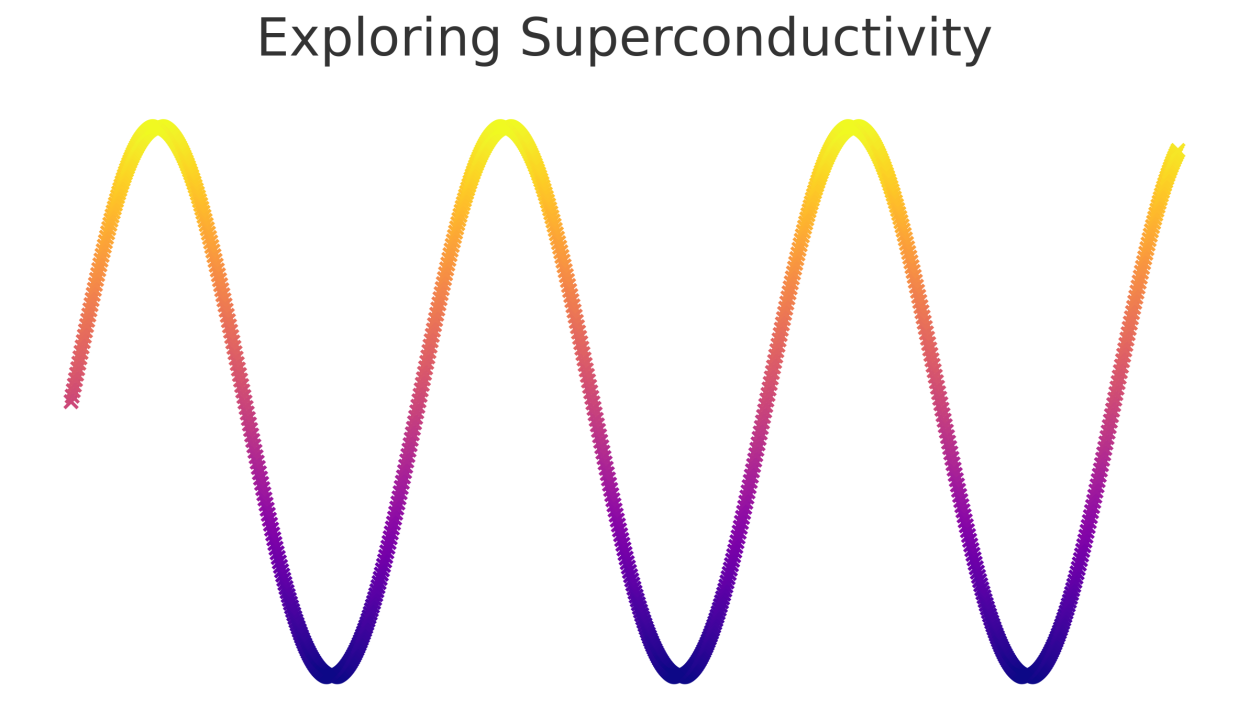
Potential Advent of New Superconductivity Technology
Earlier today, June 26th, I was thrilled to learn about an exciting new discovery in the field of superconductors. A team of researchers, who share my passion for sustainability, recently developed a material called LK-99 that can act as a room-temperature superconductor at normal atmospheric pressure.
When I first read about their achievement on the preprint server arXiv.org, I realized this could be a game-changer. For years, scientists have struggled to create superconductors that work at livable temperatures without needing special pressure containers. Superconductors have zero electrical resistance, meaning they can transmit energy extremely efficiently. But they're finicky.
Now, the invention of LK-99 may soon allow us to improve energy conservation in everything from smartphones to the power grid. The potential impact is enormous. As our planet warms alarmingly, cutting energy waste is crucial. This emerging superconductor gives me hope that, through determination and innovation, we can build a cleaner future. The researchers' breakthroughs resonated with me on a personal level. It's a small step toward tackling the immense challenge of climate change.
The superconductivity of LK-99 is not dependent on external factors such as temperature and pressure, but instead on minute structural distortions caused by a slight volume shrinkage. This distortion creates superconducting quantum wells in the interface, allowing LK-99 to maintain and exhibit superconductivity at room temperatures and ambient pressure.
The potential implications of this discovery are vast. Superconductors, materials that can conduct electricity without resistance, have long been the subject of scientific fascination. However, their practical application has been limited due to the need for extremely low temperatures or high pressures. With the synthesis of a room-temperature, ambient-pressure superconductor, we could be on the brink of a new era in energy technology.
If you’re not too well-versed in the scientific field, like me, especially that which details the specific complexities of superconductors, many energy conservation methods for swaths of electric capacities are dispelled by the amount of energy it takes to cool energy technology. Here is an easy example: a refrigerator uses significant energy to cool its interior, a major part of our household energy consumption. Imagine achieving the same cooling effect without such high energy consumption. This is analogous to the potential of room-temperature superconductors. Many energy conservation methods for swaths of electric capacities are dispelled by the energy it takes to cool energy technology (e.g., electric grids). If superconductors, like those relayed in the studies, can operate in room-temperature environments, energy conservation can be entirely and utterly revolutionized. This could mean a drastic reduction in energy consumption for large-scale operations, such as power plants and electric grids, leading to a significant decrease in overall energy usage.
The economic and environmental benefits of such a breakthrough could be transformative. Superconductors have the potential to revolutionize energy transmission, reducing energy loss and improving efficiency. This could significantly reduce greenhouse gas emissions and help combat climate change. Moreover, using superconductors in power grids could lead to a more reliable electricity supply and lower energy costs, positively impacting economies worldwide.
However, it's essential to approach this development with a healthy dose of skepticism. While the initial findings are promising, further research and peer review are necessary to validate these results. The scientific community must rigorously test and scrutinize these findings to ensure their validity.
If this discovery holds up to further scrutiny, it could represent a significant step forward in our quest for sustainable energy solutions. The potential for room-temperature superconductors to transform our energy landscape is immense, from reducing our reliance on fossil fuels to enabling more efficient use of renewable energy sources.
Synthesizing a room-temperature, ambient-pressure superconductor could be a game-changer in energy technology. As we continue to grapple with the challenges of climate change and energy conservation, breakthroughs like this offer a beacon of hope for a more sustainable future.
References:
1. Kwon, Y. (2023). The First Room-Temperature Ambient-Pressure Superconductor. arXiv.org. Retrieved from [https://arxiv.org/abs/2307.12008v1](https://arxiv.org/abs/2307.12008v1)
2. World Bank. (n.d.). Overview - Poverty. Retrieved from [https://www.worldbank.org/en/topic/poverty/overview](https://www.worldbank.org/en/topic/poverty/overview)
3. World Vision. (n.d.). Global Poverty: Facts, FAQs, and how to help. Retrieved from [https://www.worldvision.org/sponsorship-news-stories/global-poverty-facts](https://www.worldvision.org/sponsorship-news-stories/global-poverty-facts)
4. American Psychological Association. (n.d.). Effects of poverty, hunger, and homelessness on children and youth. Retrieved from [https://www.apa.org/topics/socioeconomic-status/poverty](https://www.apa.org/topics/socioeconomic-status/poverty)
5. Compassion International. (n.d.). What are the Main Causes of Poverty? Retrieved from [https://www.compassion.com/children-and-poverty/causes-of-poverty.htm](https://www.compassion.com/children-and-poverty/causes-of-poverty.htm)
6. Brookings. (n.d.). Poverty and fragility: Where will the poor live in 2030? Retrieved from [https://www.brookings.edu/articles/poverty-and-fragility-where-will-the-poor-live-in-2030/](https://www.brookings.edu/articles/poverty-and-fragility-where-will-the-poor-live-in-2030/)